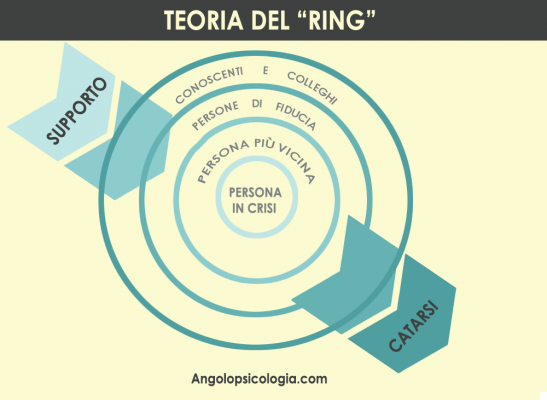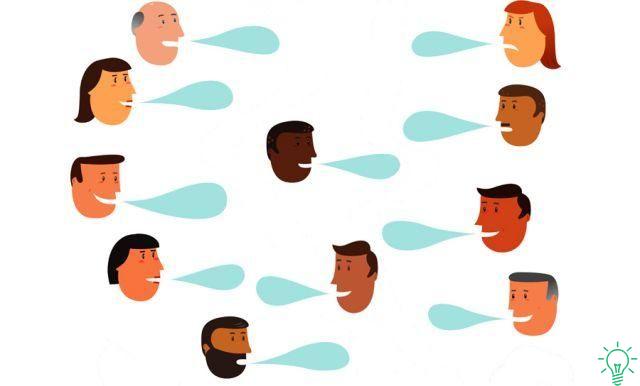
Sometimes it is difficult to find the right words to console someone. Finding the right word at the right time to generate the right resonance is an art that few people master. As a result, sometimes trying to comfort someone fails miserably and ends up adding more sadness, frustration and despair.
Clinical psychologist Susan Silk has experienced this firsthand. When she found out she had breast cancer, she received many unconvincing comments and words of comfort that did not console her at all. There were even people who unloaded their discomfort on her, adding more weight to the burden she already carried.
Then he realized that consoling and being consoled is fundamental, but not easy. Many people, with the best of intentions, end up doing more harm than good in an attempt to console others. This is why he developed the 'Ring Theory' with Barry Goldman, with which he intends to help people understand and apply the art of assertively consoling and being consoled.
What is the “ring” theory?
The “ring” theory develops around the circles of trust in which we move on a daily basis. To apply it, the first step is to identify the support network available to the person who is going through the traumatic situation.
It is a simple technique for knowing when to give comfort and to help us receive it when we need it most. It is valid for all types of crises, from health problems to financial difficulties and romantic or existential conflicts.
To put it into practice we must start by drawing a first circle, which will be the central ring. Within that circle we must write the name of the person who is experiencing the trauma or complicated situation.
So let's draw a second larger circle around the first one. On that ring we write the name of the person closest to the one who is suffering the trauma, such as the partner or perhaps a child.
Next, we draw a third circle, but this time we write in it the names of the closest people, such as parents or close friends.
Finally we draw a fourth circle and write inside it the names of people who are less close but who can help in some way, such as distant relatives, work colleagues or neighbors.

In this way, we not only make a graphic representation of the support networks available to the person, but we also realize the position in which we find ourselves in the situation.
The rule: console the most affected, seek consolation in the least affected
Keeping in mind those concentric circles, the rule to apply is simple: in the inner circles consolation is offered, in the outer ones one seeks. Those most affected should be consoled while those least affected should be consoled. It's that simple.
The person in the center circle can say whatever he wants to anyone in the rest of the circles, anytime, anywhere. That person is having a hard time and needs support and validation, so he is allowed to complain about his bad luck or injustice.
Of course, it does not mean feeding an endlessly victimized or defeatist attitude, but we must understand that many times before we get up, we have to lick our wounds. We all have different healing rhythms, and in the early stages it is normal for us to feel disappointed, hurt or frustrated. Therefore, in the first moments after adversity, the person is likely to just need to do catharsis, so the best consolation is to listen to it.
Of course, sometimes the problems of others also affect us and we can feel frustrated, sad or disappointed. It's normal. But dumping those emotions directly on the people most affected won't help anyone. It will only serve to increase the pain and suffering.
Instead, we can seek comfort in people who are in larger circles because being further away from the problem we assume they are at the psychological distance needed to help us manage our emotions.
In summary, we must be clear that when we speak to a person who is in a smaller circle than ours, someone closer to the center of the crisis, our main goal is to help them, not to add more discomfort, pessimism or negativity.
How to console assertively?
When a person needs to be consoled it is best to practice active listening. It is important to avoid the temptation to give advice because it is often not necessary and risks falling on deaf ears or, worse still, being annoying or appearing bossy. The person who is having a hard time just needs to be heard and have a shoulder to cry on. Rather than trying to comfort her by telling her about our past experiences or telling her what we would do in her place, we'd better validate her emotions and ask her how we can help her.
Maybe that person needs someone to take a stroll with to let off steam or to take care of the kids or pets for a few hours. Or maybe she needs to get out and be distracted or someone to take her to the hospital. Being useful, as much as possible, does not only involve taking a proactive attitude, but also showing that you are available and offer unconditional support. And sometimes that's all it takes to get out of the crisis.


























